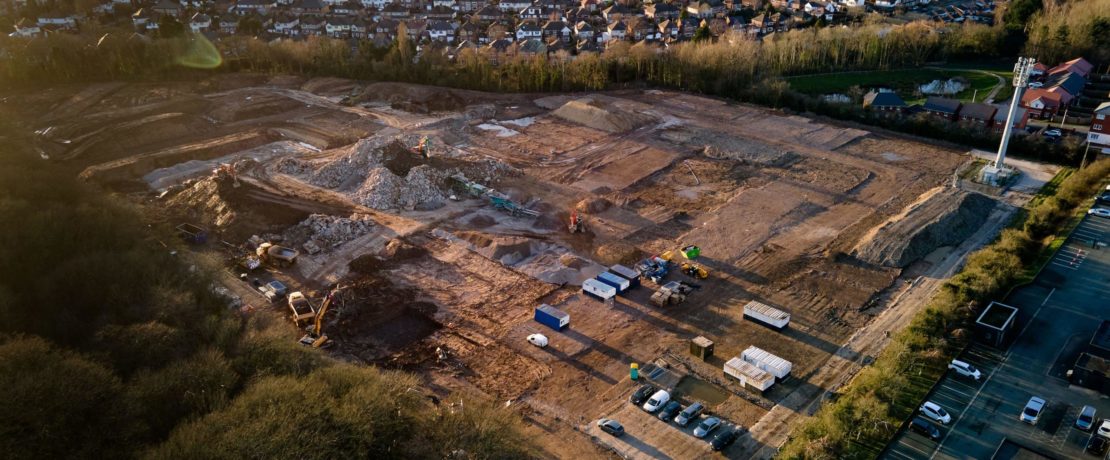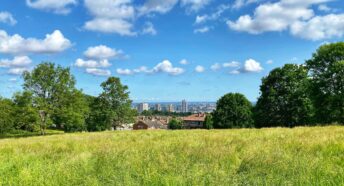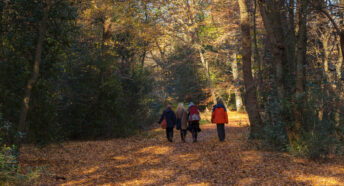Our view on Labour’s five golden rules for development on the ‘grey belt’
The Labour Party last week set out their plans for delivering new homes in the Green Belt. They propose a new definition of ‘grey belt’ land that they see as poor-quality Green Belt land such as ‘ugly, disused land’ including scrubland which Labour see as having little or no value for nature or access for people.
They’ve set out five ‘golden rules’ for development on this so-called ‘grey belt’ land and here we outline our views on Labour’s idea and how we think it could work.
1. Brownfield first
Labour says:
‘Labour reaffirms its commitment to brownfield first planning policies, meaning areas should always look to build on brownfield sites before building on the green belt. Within the green belt, they should also prioritise brownfield land.’
We think:
After many years of campaigning for a brownfield-first approach, CPRE welcomes this commitment to this policy. Our research has shown that there are enough ‘shovel-ready’ brownfield sites in the UK for 1.2 million new homes, which will make a significant contribution to Labour’s goal of 1.5 million homes.
2. Grey belt second
Labour says:
‘Labour will create a new category called grey belt, prioritising development in grey and ugly areas of the Green Belt. We don’t think it is right that wastelands and old car parks located on the greenbelt are given the same protections in national policy as rolling hills and nature spots in the green belt.’
We think:
The Green Belt policy was introduced to preserve areas of nature and farming around our towns and cities as well as to prevent urban sprawl – with increasing pressures on land use, these functions are just as valuable today as they were at its inception. It is important to remember that most of the Green Belt is high value countryside, including ancient woodlands, nature reserves and productive farmland which play a significant role in reversing our declining biodiversity, storing carbon, producing food and allowing people to access our countryside. Once they’re gone, they’re gone.
Labour’s proposal to designate a new category of ‘grey belt’ causes some concern, specifically, the inclusion of ‘ugly wastelands’ into this category. If done badly, Labour’s policy could lead to more speculative development by encouraging landowners to deteriorate undeveloped land. While these areas of scrubland may not be as photogenic as wildflower meadows, they could be harnessed to create rich habitats such as wetlands and woodlands, which would benefit local communities, carbon sequestration and flood mitigation, while being accessible for people.
3. Affordable homes
Labour says:
‘Any Green Belt land that is built on must target 50% affordable housing. There are many examples across the country of green belt sites delivering more than this (e.g. 100%) reflecting the lower land value of green belt. We will end the Tories’ wild west of Green Belt building, with affordable housing rates as low as 10% with expensive executive homes local people can’t afford.’
We think:
When talking about the housing crisis, too often the affordability of those homes is ignored, meaning that while more homes are built no one can afford to live in them. CPRE found that only 5% of the housing built on Green Belt land is social housing and consistently less affordable housing overall was provided than called for by local planning policy. So, Labour’s focus on affordable housing is positive.
However, it is crucial that more social housing is delivered to truly tackle the housing affordability crisis. The next government must support rural communities within the Green Belt by encouraging the use of small ‘rural exception sites’ to deliver affordable and social housing on the edge of their villages, these sites also show that existing Green Belt policy is flexible enough to deliver housing
Existing affordability criteria are also simply not good enough – 80% of market value is still unaffordable for most people. ‘Affordable’ must be redefined in line with average local incomes not market rates. Without this, Labour’s policy will fail to deliver the types of homes we need and will not end speculative development in the Green Belt.
4. Boost public services and infrastructure
Labour says:
‘We will ensure that when your town or city grows, public services and infrastructure grow too – green belt release must include new infrastructure like more school and nursery places, care homes or GP capacity. The exact delivery will be negotiated by local leaders depending on the needs of their patch.’
We think:
When developing on Green Belt land we must remember the original purposes of the Green Belt policy: to prevent urban sprawl by encouraging housing to be directed towards urban and brownfield sites near existing infrastructure and the amenities and services we need.
Building out into the Green Belt where there are fewer transport networks is not ideal because of the lack of infrastructure that exists. It is likely there will be fewer bus or train services, making people more dependent on their cars, while services will not be able to cope with a significant rapid influx of people without investment.
While there are some areas of developed land within the Green Belt which could be used to deliver the housing we need, we must prioritise urban densification before building out into rural areas with poor access to infrastructure and local services. Leaving this to local leaders without improvements to the planning system to give power to communities at the expense of the large housing will mean nothing changes.
5. Protect genuine green space
Labour says:
‘Homes built on the greenbelt must be accompanied by a plan to improve existing green spaces and create new ones accessible to local people. This will mean new woodlands, parks, playing fields and protected space for local species. Lots of existing green belt is low quality wasteland sat on by landowners that local people can’t use and enjoy. We agree with the Chair of Natural England, who has said housebuilding and protecting nature are not incompatible. We will also look to ensure high environmental standards, that go above the legal minimum on biodiversity net gain must be met. The Green Belt is crucial for solving the climate, nature and food crises’
We think:
CPRE is very concerned about this rhetoric, it is simply not true to say that lots of existing Green Belt is low quality wasteland. The Green Belt land encompassing the 16 largest urban cores of England are an important part of our green infrastructure network.
Agricultural land makes up 65.6% of Green Belt land across England and other undeveloped land includes significant areas of woodland (around 19%) and flood plains (around 130,000 ha). These areas are crucial for solving the climate, nature and food crises – from carbon sequestration to flood mitigation and providing habitats to wildlife. They bridge the gap between the natural environment and the built environment in urban areas and help to lessen, and otherwise mitigate, the urban heat island effect.
While some of that land will be suitable for housing, other parts will be much better suited for agriculture or new accessible green spaces. We must look at low quality wasteland in the Green Belt as a unique opportunity to expand and regenerate new areas of habitat – today’s scrubland can be tomorrow’s wetlands and woodlands.
CPRE Lancashire, Liverpool City Region and Greater Manchester have been instrumental in creating the Greater Manchester Ringway, creating a 300km circuit in the Manchester Green Belt, showing the value the Green Belt can have. Where there is poor quality land in the Green Belt, we must look at examples like this to see how these areas can be improved for local communities and the planet.
Once we’ve built on the Green Belt there is no way to reverse it, so these decisions must be taken with the natural environment in mind.
We need an joined-up approach to the Green Belt
CPRE welcomes that Labour have provided significantly more detail on how they will deal with the Green Belt in the future, especially with a brownfield-first policy. But need an integrated approach. Too often politicians deal with the problems our country faces with a piecemeal approach, rather than looking at all the issues as a whole.
As we face the interconnected challenges of fixing the housing crisis, cutting emissions, restoring our natural environment and improving food security we are expecting our countryside to do a lot of heavy lifting. We need a proper, cross-departmental Land Use Framework which allows us to look holistically at how we use our land to tackle these issues, without one we will never be able to solve these complex crises effectively.
About the author
Ed Molyneux is public affairs manager at CPRE, the countryside charity.







